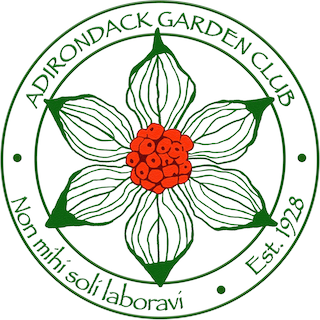AGC Seed Sowing Demonstration Recap
Containers should be transparent or semi-transparent
Winter Seed Sowing Demonstration
When should you sow your seeds for a summer crop of fresh vegetables? How about right now. Over 100 guests joined Adirondack Garden Club members on Feb. 16, 2021, for a fascinating—and inspiring! —demonstration of sowing seeds outdoors in the winter months, even with the challenges of an Adirondack winter. Roxanne Zimmer, Ph.D. of Suffolk County's Cornell Cooperative Extension office, led the Zoom presentation.
According to Roxanne, winter seed sowing is the easiest way to start seeds and works by creating what are, in effect, miniature greenhouses using recycled plastic containers. It's a method, Roxanne says, that is tolerant of neglect, with the seeds sown and simply left outside to the elements. Seeds sown by this method germinate more slowly than those started inside. Still, the plants are ultimately hardier and healthier, requiring no hardening-off period like those germinated inside on a windowsill or under grow lights.
There are three components to winter seed sowing: seeds, soil, and containers.
Seeds have a protective coating, says Roxanne, and "know" when to germinate. The most accessible flower seeds to grow using this technique are marigolds, salvia, celosia, zinnias, echinacea, rudbeckia, rose campion, daisies, yarrow, coreopsis, and hyssop.
Vegetables easily grown this way are lettuce, spinach, Swiss chard, radishes, carrots, beets, tomatoes, cucumber, squash, melons, and peppers.
Roxanne also shared a useful Are My Seeds Still Good? chart that tells how many years unused seeds will remain viable. If in doubt, she recommended doing a germination test by leaving a few seeds on a moistened paper towel in a plastic storage bag for a few days in a dark space. Apply the rate of germination to all the seeds in that lot.
Soil requirements are essential for winter seed sowing. Even the best garden soil is not suitable, as it is too "full of life" for container sowing and will often harden like a brick. Reusing potting soil from other plantings is also not a good idea because it leads to "damping off," when the base of a seedling rots just at the soil line, a common seedling disease caused by fungus or mold in previously used soil.
"The best soil for this technique is a sterile growing medium, a seed starting mix developed for starting seeds, with the optimum word being "sterile."
Containers should be transparent or semi-transparent and tall enough to allow seedlings to grow a few inches after germination and before transplanting into the garden. Holes should be drilled into the top (for letting water in) and bottom (for drainage). Remember to remove the cap from a soda bottle or jar if used. Milk jugs should be slit to create a hinged opening, then taped back together after the seeds are sown inside. Clamshell packaging works well, too.
Roxanne recommended moistening the soil before putting it into the container and planting seeds to the depth instructed on the packet. The containers are then placed outdoors, preferably in a southern location where they will get plenty of sun.
All that’s needed after that is benign neglect until the seeds awaken.
Roxanne recognized that the Adirondacks pose unique challenges, with zones ranging from 4 to 7, with last-frost dates as late as June 1. In those instances, she recommended using a simple cold frame (even two old windows leaned up against each other) to extend protection until the seedlings can be safely planted after the last frost.
Perhaps the best (albeit anecdotal) evidence for this method was a story she shared about a Master Gardener friend who planted a particular variety of tomatoes using this winter seed sowing technique and then purchased seedlings of the exact same variety. Although the purchased plants were beautiful and the winter-sown plants not as glamorous looking as the greenhouse grown plants, which one was more productive?
You guessed it, the one started in winter, in a recycled container, that spent time under the snow in the outdoor garden.


